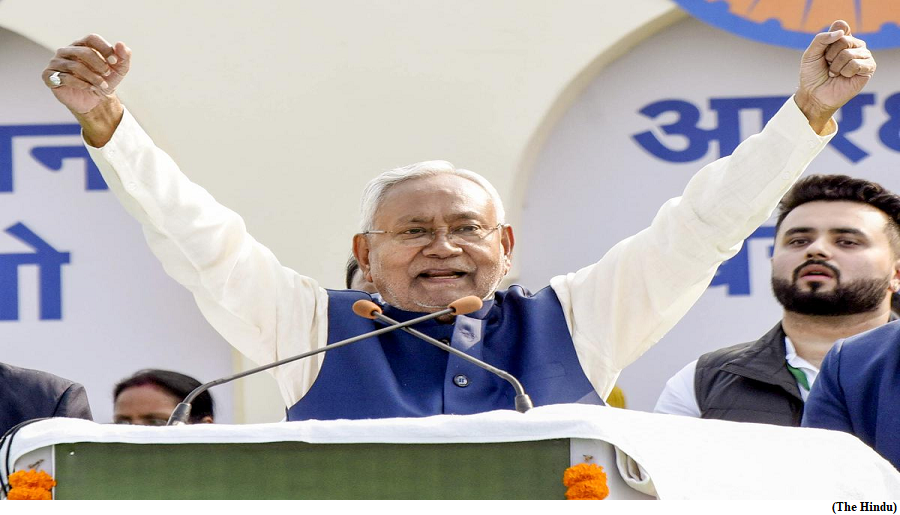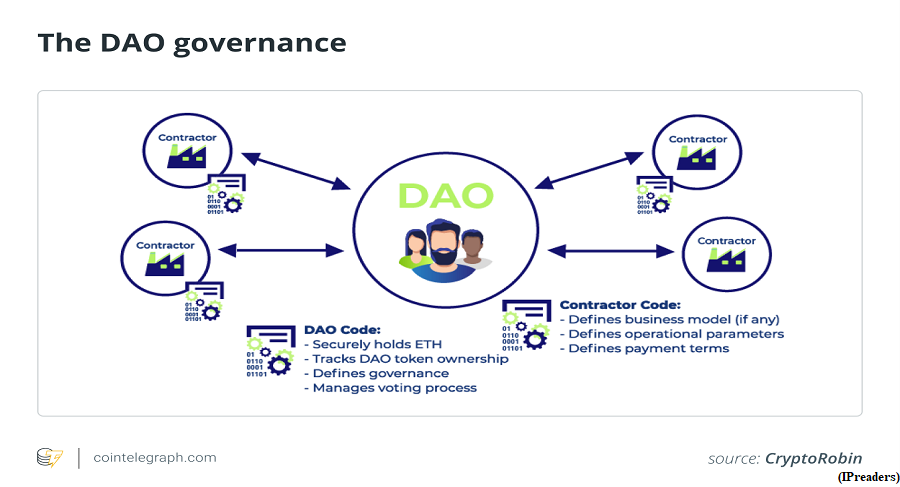Why is Bihar demanding the Special Category Status? (GS Paper 2, Social Justice)

Why in news?
- Recently, the Bihar Cabinet passed a resolution seeking the grant of special category status (SCS) to Bihar.
- The demand comes in the backdrop of the findings from the “Bihar Caste-based Survey, 2022”, which revealed that nearly one-third of Bihar’s population continues to live in poverty.
What is a special category status?
- It is a classification granted by the Centre to assist the development of States that face geographical or socio-economic disadvantages.
- The SCS was introduced in 1969 on the recommendation of the fifth Finance Commission (FC). Five factors considered before granting SCS are
- hilly and difficult terrain
- low population density and/or sizeable share of tribal population
- strategic location along international borders
- economic and infrastructural backwardness and
- non-viable nature of state finances.
- In 1969, three States; Jammu & Kashmir, Assam and Nagaland were granted the SCS.
- Subsequently, eight more States including Arunachal Pradesh, Manipur, Meghalaya, Mizoram, Sikkim, Tripura, Himachal Pradesh, and Uttarakhand were given the SCS by the erstwhile National Development Council.
What are the benefits attached?
- The SCS States used to receive grants based on the Gadgil-Mukherjee formula, which earmarked nearly 30% of the total central assistance for States to the SCS States.
- However, after the abolition of the Planning Commission and the recommendations of the 14th and 15th FC, this assistance to SCS States has been subsumed in an increased devolution of the divisible pool funds for all States (increased to 41% in the 15th FC from 32%).
- Additionally, in the SCS States, the Centre-State funding of centrally sponsored schemes is divided in the ratio of 90:10, far more favourable than the 60:40 or 80:20 splits for the general category States.
- Besides, there are several other incentives available to the SCS States in the form of concession in customs and excise duties, income tax rates and corporate tax rates to attract investments to set up new industries etc.
Why is Bihar demanding the SCS?
- The demand for SCS for Bihar has been made by various political parties of the State time and again.
- The poverty and backwardness of the State are argued to be because of the lack of natural resources, continuous supply of water for irrigation, regular floods in the northern region and severe droughts in the southern part of the State.
- Simultaneously, the bifurcation of the State led to the shifting of industries to Jharkhand and created a dearth of employment and investment opportunities. With a per-capita GDP of around ₹54,000, Bihar has consistently been one of the poorest States.
- Highlighting the same in his fresh demand for SCS, Bihar CM said that the State is home to around 94 lakh poor families and the granting of SCS will help the government get about ₹2.5 lakh crore required to fund various welfare measures over the next five years.
Do other States also want SCS?
- Since its bifurcation in 2014, Andhra Pradesh has asked for a grant of SCS on the grounds of revenue loss due to Hyderabad going to Telangana.
- Additionally, Odisha has also been requesting for the SCS, highlighting its vulnerability to natural calamities such as cyclones and a large tribal population (nearly 22%).
- However, the Central government citing the 14th FC report, which made a recommendation to the Centre that no State be accorded the SCS, has repeatedly denied their demands.
Is Bihar’s demand justified?
- Although Bihar meets most of the criteria for the grant of SCS, it does not fulfil the requirement of hilly terrain and geographically difficult areas, which is considered to be the primary reason for difficulty in infrastructural development.
- In 2013, the Raghuram Rajan Committee set up by the Centre, placed Bihar in the “least developed category” and suggested a new methodology based on a ‘multi -dimensional index’ for devolving funds instead of a SCS, which can be revisited to address the State’s backwardness.
Decentralised Autonomous Organisations
(GS Paper 3, Science and Technology)
Context:
- Decentralised Autonomous Organisations (DAOs) represent a groundbreaking innovation at the intersection of blockchain technology and governance.
- These digital entities operate without centralised control and are governed by smart contracts and the consensus of their members, often utilising cryptocurrencies as a means of decision-making and resource allocation.
- DAOs have garnered attention for their potential to change various industries, including finance, art, and governance, by fostering transparent, democratic, and self-executing systems.

Origin of DAOs:
- DAO is an organisation represented by rules encoded as a computer program that is transparent, controlled by the respective organisation members, and not influenced by a government.
- The idea behind DAOs is to create self-sustaining, community-driven entities governed by smart contracts on blockchain networks.
- One of the most important aspects of DAOs is their potential to change the idea of collaboration. They enable global, borderless cooperation on an unprecedented scale.
- Participants, often referred to as token holders, can propose and vote on decisions related to the organisation’s goals and resources. This decentralised decision-making process ensures that no single entity holds undue influence.
Applications:
- In the realm of decentralised finance, platforms like Compound and MakerDAO have introduced lending and borrowing services, enabling users to participate in the global financial ecosystem without relying on traditional banks.
- In the art world, artists are tokenising their creations and utilising DAOs to manage royalties and maintain control over their intellectual property.
- Supply chain management is another arena where DAOs are gaining traction, as they offer transparency and traceability in global supply chains, ensuring the authenticity and quality of products.
- Even in the governance of online communities, DAOs have emerged as tools for decision-making, with platforms like DAOstack facilitating decentralised governance structures for internet communities.
Implications for the digital world
- They are decentralising entities, shifting power away from centralised authorities and placing it firmly in the hands of the collective. Decision-making within DAOs becomes a democratic process, where token holders have a direct say, resulting in a more equitable distribution of influence.
- Transparency and trust are fundamental tenets of DAOs. Smart contracts that underpin DAO operations are transparent and immutable, fostering trust among participants. Rules are predefined and require consensus for alteration, minimising the need for intermediaries. This transparency can potentially disrupt traditional industries by eliminating the opacity often associated with centralised organisations.
- DAOs champion inclusivity, democratising access to resources and opportunities. They transcend geographical and socio-economic barriers, enabling global participation. This inclusivity not only promotes diversity but also fuels innovation, as individuals from various backgrounds collaborate to create innovative solutions.
- DAOs inspire new forms of collaboration. They facilitate global cooperation, allowing participants with shared goals to unite without the need for intermediaries. This dynamic environment fosters innovation and cooperation as ideas flow freely, unencumbered by hierarchical structures.
Challenges:
- The infamous DAO hack in 2016 exposed vulnerabilities in the code, leading to a contentious hard fork (a hard fork refers to a change in a network’s protocol that makes previously invalid blocks and transactions valid, or vice-versa) in the Ethereum blockchain.
- This incident highlighted the need for rigorous security audits and raised questions about the immutability of blockchain systems.
- The legality and regulatory framework surrounding DAOs remain a topic of debate. Traditional legal systems are still catching up with the decentralised nature of these entities, leaving room for uncertainty in many jurisdictions.
- DAO tokens, often representing ownership or participation, can potentially be considered securities, subjecting them to complex regulatory requirements and compliance challenges. Legal liability within DAOs remain elusive, with decentralised decision-making and automated smart contracts making it difficult to assign responsibility for actions taken.
- Issues like smart contract vulnerabilities and security breaches introduce questions of legal recourse and liability.
- Taxation of transactions within DAOs, identity verification, and compliance with Anti-Money Laundering (AML) and Know Your Customer (KYC) regulations further add layers of complexity to the legal framework. Dispute resolution, often relying on code-based solutions, present a unique challenge in the absence of traditional legal mechanisms.
Way Forward:
- DAO creators, participants, and regulators are collaborating to develop guidelines that accommodate the unique characteristics of DAOs within existing regulatory structures.
- They aim to address concerns such as governance, intellectual property, and cross-border operations while ensuring transparency and fairness in token-based decision-making.
- It is crucial for regulators, developers, and participants to work collaboratively to harness the full potential of DAOs while addressing their evolving challenges.
Supply-demand gap for pulses, oilseeds, fruit to persist over the next seven years: report
(GS Paper 3, Economy)
Why in news?
- Recently, a research report titled, “Prospects of India’s demand and supply for agricultural commodities towards 2030” was published by the National Bank for Agriculture and Rural Development (NABARD) and the Indian Council for Research on International Economic Relations.

Key Highlights:
- Price spikes in pulses may have been spurred by dented production prospects amid an uneven monsoon, but India’s output shortfalls vis-a-vis demand for the key protein source and edible oils and fruits are expected to persist or even widen over the next seven years.
- Commodities like oilseed, pulses, and fruits are expected to experience a supply and demand gap in the coming years. Therefore, there is a need to increase the level of production and productivity of oilseeds, pulses, and fruits since their demand in the future shows an increasing trend.
- As per capita incomes rise, the consumption basket of people tends to diversify towards nutritious and high-valued commodities, including fruits and vegetables and dairy products and away from staples such as rice and cereals.
- So demand growth for non-cereals and high-valued commodities is expected to exceed the population growth rate and cereal commodities’ growth in coming years.
Deficit:
- Output of pulses, some coarse cereals and groundnut oil seeds could hit a three-year low this Kharif season, as per initial independent estimates for crop output.
- Retail inflation in pulses accelerated sharply to 18.8%in October, while inflation in fruits picked up to hit 9.34%. Edible oils have witnessed deflation through most of 2023, as their prices had surged sharply in 2022 after the Ukraine conflict erupted.
- Oil seeds production is expected to rise to 35 million to 40 million tonnes (MT) by 2030-31.
Recommendations:
- The deficit of oilseeds in the food balance sheet in 2030 is worrisome for the country given the edible oil imports as high as 13.4 MT during 2020-21. A technological breakthrough in oilseeds to increase productivity or area expansion are two possible solutions to improve oilseeds’ balance sheet in the long run.
- The report reiterated the recommendation of a 2012 report from the Commission for Agricultural Costs and Prices (CACP) to raise the import duty whenever the import price of crude palm oil falls below $800 a tonne to protect Indian producers.
- However, it also added that attaining self-reliance in water-intensive and long-gestation crops such as oil palm may not be worth pursuing as a sustainable goal either.
- They projected demand for different farm produce up to 2030-31 based on three alternative growth scenarios that assumed per capita income (PCY) growth ranging from 4.1% to 6.1%. Supply-side estimations were done by assuming that trends will persist in line with those in the last 10 years (prior to 2020-21) or over the previous 15 years.
Way Forward:
- The report has called for policy attention to ensure a balance between domestic production and the absorption of these commodities, diversification towards high-value commodities that require major investments in market infrastructure, processing, and cold storage and warehousing facilities to build an efficient and reliable value chain.




